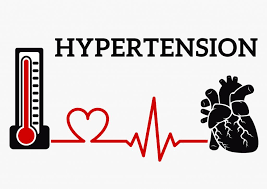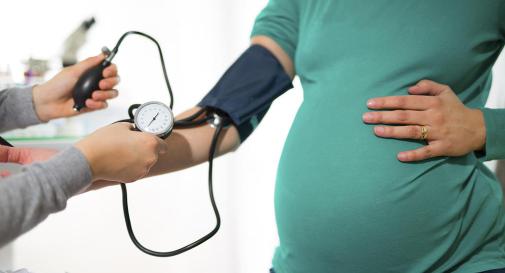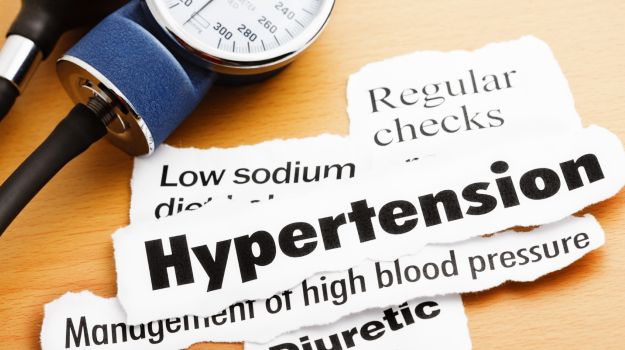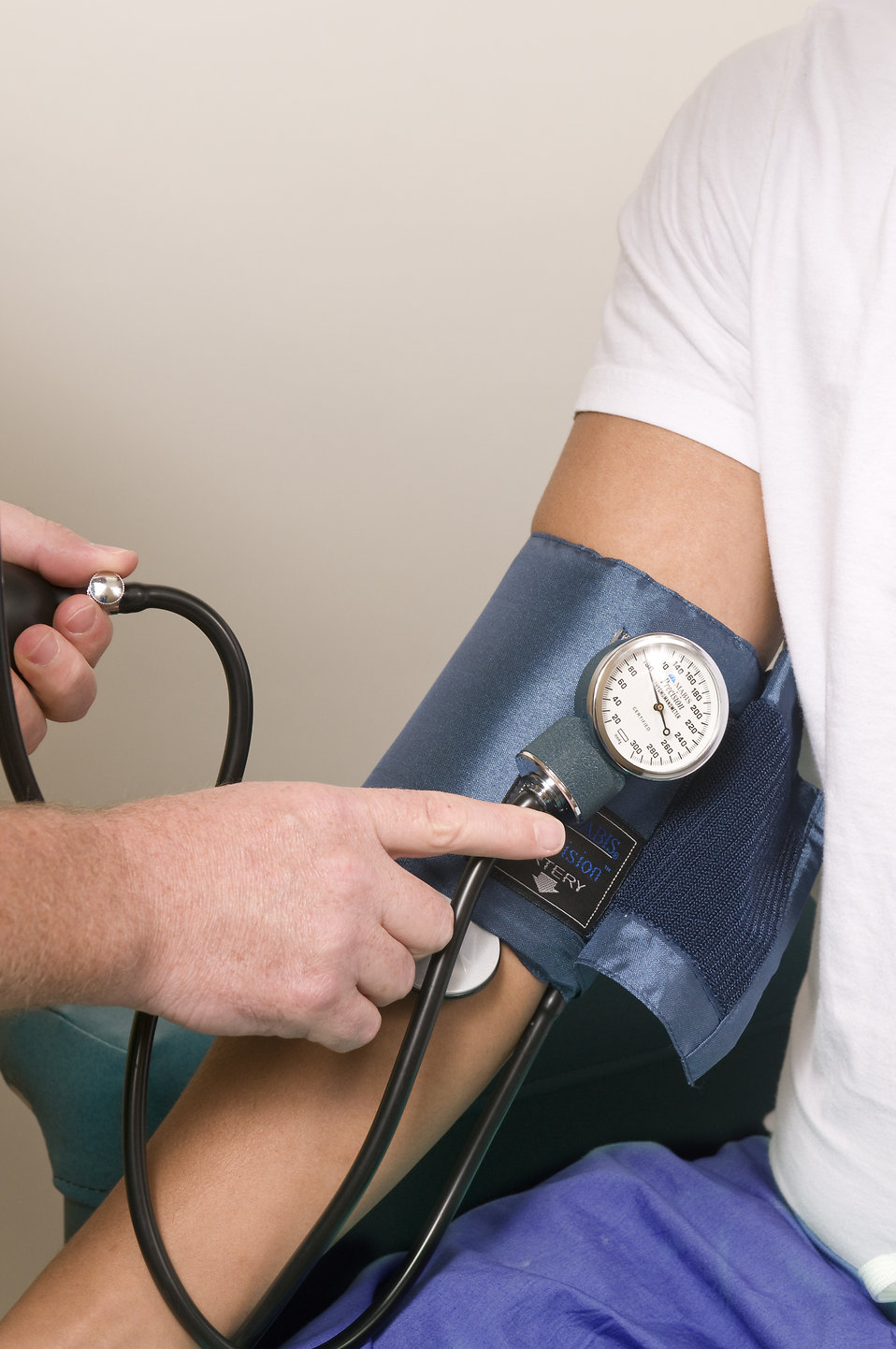
High blood pressure – or hypertension – is common in both men and women, especially as we age. However, it tends to follow different patterns over the course of men’s and women’s lifetimes.
“In general, blood pressure in children and adolescents is equivalent between males and females,” says cardiologist Dr. Paula Harvey, director of the cardiovascular research program at Women’s College Hospital.
That pattern changes after puberty and through the teenage years. Through their reproductive years, women tend to have lower blood pressure than men the same age, and lower rates of hypertension.
“When women transition through menopause things start to change,” Dr. Harvey says. “Blood pressure in women starts to increase with age at a faster rate than it does with men, so you get a steepening of that age-related increase in blood pressure. By age 75 or 80, there are more women with high blood pressure than men.”
Age-related patterns
With age, specific types of high blood pressure become more prevalent in women compared to men. Around menopause and after, women experience a disproportionate increase in systolic blood pressure (the top number in a blood pressure reading) versus diastolic pressure (the lower number). This pattern of a high systolic reading and a normal diastolic is called isolated systolic hypertension (ISH). It is associated with a stiffening of the blood vessels that women experience after menopause.
“Before menopause, we have very pliant, stretchy blood vessels,” Dr. Harvey says. “In that second half of life they start to get very stiff, and that’s reflected in this change in pattern.”
Despite the low diastolic reading, ISH is still a health concern.
“You can’t be complacent because your diastolic reading is in the normal range,” Dr. Harvey cautions. “When it’s coupled with that high systolic reading, that’s actually reflecting stiff blood vessels, and we know that is associated with increased adverse outcomes from the hypertension.”
Older women with ISH may also experience variations in their blood pressure. It may rise if they are under stress or doing certain activities, then drop down again, then increase again.
“That isolated systolic hypertension pattern is more difficult to control, and is associated with all the risks that high blood pressure is associated with,” Dr. Harvey says. “We treat high blood pressure because it leads to increased risk of cardiovascular disease such as heart attacks and strokes, heart failure, heart rhythm disturbances, kidney failure and possibly dementia.”
Reproductive factors
Superimposed on those lifetime patterns of blood pressure are factors related to reproductive changes.
“Pregnancy can be associated in some women with pregnancy-induced hypertension,” Dr. Harvey says. “The contraceptive pill, which is used by very large numbers of women, can cause increased blood pressure in a small number of individuals.”
That increase in blood pressure can happen at any time a woman is taking birth control pills. That’s why Dr. Harvey recommends that all women taking the pill have their blood pressure checked annually.
Hormone replacement therapy used by perimenopausal and menopausal women does not appear to have the same effects on blood pressure as the contraceptive pill.
Sex and gender must also be taken into account when prescribing medication for hypertension.
“Because we are treating women at different stages in their lifespan we have to be very aware of the best treatments for them,” Dr. Harvey says. For example, great care must be taken when choosing medications for women of reproductive age who are likely to become pregnant, or women who are breastfeeding. After menopause, the ISH pattern of hypertension that is common in women responds better to certain classes of medication than others.
Lifestyle
Dr. Harvey stresses that some of the most effective interventions for hypertension at any age are not pharmaceutical.
“I’m very invested in lifestyle interventions,” she says. “I spend a lot of time talking to my patients about what they can do for themselves before we even start thinking about medication. Top of the list is exercise.”
Exercise can be as effective as drug therapy. For example, the ISH pattern of high blood pressure so often seen in postmenopausal women can be reduced with exercise.
“Exercise helps keep the blood vessels stretchy and pliant, so you don’t have that progression to very stiff blood vessels associated with ISH,” Dr. Harvey explains.
What you put in your body matters, too. The DASH (Dietary Approach to Stop Hypertension) diet – which stresses fresh fruit and vegetables, whole grains, fish, low fat intake and low salt – is recommended for people with hypertension. Alcohol recommendations follow the Canadian guidelines for low-risk drinking: no more than two drinks per day for women, and no more than 10 drinks per week in total.
The risks of smoking – including premature cardiovascular disease and death – cannot be overstated.
Other lifestyle factors associated with hypertension include obesity, life stress, and poor quality sleep. Addressing all of these factors can have a powerful effect on blood pressure, and on overall heart health.
Preeclampsia is a high-blood pressure disorder which is unique to pregnancy and develops about 3 to 8% of all pregnant women. According to latest study, it ties alongside it a potential risk of stroke.
According to the study, one in 10 pregnant women may be six times more at a risk of having a stroke during or after childbirth, as compared to normal women.
Women suffering from Preeclampsia commonly complain about high blood pressure, swollen feet, ankles and face and severe headaches. If the current findings published in the journal Stroke are to be believed, Preeclampsia patients have another cause of worry added to their health concern list.
The lead author Eliza C Miller, postdoctoral student at Columbia University in the US said that conditions like chronic hypertension, bleeding or clotting disorders, or urinary tract infections may be at an increased risk of stroke.
Explaining the mechanism behind it the study says, that infections causes inflammation, which can contribute significantly in triggering a stroke, especially amongst the young people.
The study explained that Preeclampsia is an inflammatory disorder, and it could be the infections that could put the woman on the radar of risk.
Researchers analysed health records of 197 women who had a preeclampsia-related stroke and 591 women with preeclampsia who did not have a stroke, as part of their study. They found that the occurrence of attacks and stroke in women suffering from preeclampsia was over 200 per 100,000 deliveries, and more than one in 10 women in the study who had a preeclampsia-related stroke died in the hospital.
Alongside that data, Miller mentioned that it was crucial to take into account that the risk of stroke in women with preeclampsia doesn't end with delivery. And that nearly two-thirds of preeclampsia-related strokes trigger after birth, when the mothers are discharged from the wards.
She also advised, women with preeclampsia to not take any neurological symptoms, such as severe headache, very seriously, especially during the postpartum period.
Blood pressure is basically what happens when the blood exerts force against the walls of the blood vessels. This force matches the cardiac output and also, the resistance experienced from the walls of the blood vessels a process that produces blood pressure. Hypertension is a condition that occurs when this pressure rises above the normal which is anything over 140 over 90 mHg. The symptoms of this condition will include hot flashes, dizzy spells, fatigue, accelerated heartbeat and other debilitating conditions. Sex is also an area that gets affected by hypertension.
Let us find out the causes and treatment for the same.
Hypertension and male sexuality: A chronic patient of hypertension will go through a depletion of the lining that flanks the blood vessels, which in turn, limits the flow of blood. This also means that there is less blood flowing towards the penis and surrounding areas that get activated during sexual intercourse. This makes it difficult for many hypertensive men to achieve and retain an erection for long enough to enjoy sexual activity. This problem is most commonly known as erectile dysfunction. Also, these blood pressure problems can have an effect on ejaculation which leads to lack of sexual satisfaction. Many drugs prescribed for such patients may also lead to this problem as a side effect, which causes further fear and anxiety for the patient.
Hypertension and female sexuality: While the effect of high blood pressure on a woman’s sexuality is not as conclusive as its effect on male sexuality, it is a medically proven fact that decreased blood flow due to high blood pressure will also lead to a reduction in the blood flow to the vaginal area. This can lead to many problems including vaginal dryness and pain during intercourse, lack of arousal, difficulty in achieving an orgasm and relationship as well as anxiety issues.
Treatment: For women, better lubrication for better arousal is one of the key factors. For men, the use of safe medication as far as hypertension is concerned, is crucial. Medicines like sildenafil and tadafil as well as vardenafil are not known to interfere with the blood pressure medication. Yet, it is important to contact the doctor before having any medication.
Therapy: Better responses can be garnered by building intimacy, an area that a sex therapist or sexologist can help you with. With the help of proper therapy, the patient can learn to relax and enjoy the act with lots of foreplay and experiences that will help in building closeness like taking a warm bath together and other such activities. Promoting overall health can also help in improving your sex life if you are a patient of hypertension. If you wish to discuss about any specific problem, you can consult a cardiologist.
High blood pressure or hypertension is a condition where your blood pressure crosses the normal limit of 140/90. If untreated, it may lead to heart disease and stroke. It can be dangerous as it makes your heart work harder to pump out the blood. Excessive consumption of salt, an unhealthy diet, obesity, lack of physical activities and stress are some of the common causes of high blood pressure. For most of us, our lifestyle resonates with one or more of the above factors which is why its is not surprising that high blood pressure is affecting the young and the old alike.
While high blood pressure is turning out to be common and more and more people are getting diagnosed, a new study reveals something rather shocking. As per a study, published in the journal Canadian Family Physician, almost 20% of the people who are being treated for high blood pressure may not really have it! Researchers of the study believe that it might be a case of misdiagnosis as a result of doctors using manual devices to measure blood pressure.
To prove their point, they conducted a survey among Canadian family doctors in 2016 which revealed that 52% of the 769 respondents used a manual tensiometer to measure blood pressure. Only 43 per cent used an automatic device. The manual devices that measures blood pressure is considered to use a dated technology that often leads to errors and misdiagnosis.
"About 20 per cent of people receiving treatment for hypertension don't actually have a problem and do not need medication. This is due mainly to the fact that their blood pressure was improperly measured. Clinicians should use automatic devices," said lead author Janusz Kaczorowski, Professor at Universite de Montreal in Canada.
It is recommended to use automated devices to measure high blood pressure because they tend to eliminate something known as the white-coat syndrome in which a person may report higher levels of blood pressure due to the stress of being in a doctor's office and human interaction. The correct diagnosis of high blood pressure can definitely help in reducing the incidence of heart disease.
High blood pressure can be effectively managed with the help of a good diet and regular exercises. People are also advised to keep a check on their salt intake. According to Wellness Expert, Preeti Rao, certain home remedies like lemon, watermelon seeds and garlic can help lowering high levels of blood pressure, though, you must always consult your doctor before changing or altering your medicines and opting for a natural remedy.

You probably know that high blood pressure, or hypertension, is a major risk factor for heart attack, stroke, vision problems, even dementia. But did you know this? Hand-grip exercises - squeezing one of those V-shape devices with a resistance spring - can lower your blood pressure by about 10 percent.
That's one of the "15 Things You Better Know About Your Blood Pressure" that AARP reports in the June issue of its Bulletin publication and at aarp.org. It cites a "landmark" paper published in 2013 in Hypertension, a journal of the American Heart Association, which said that while all exercise did good things for blood pressure, "some of the most impressive improvements" came after four weeks of hand-grip squeezing.
AARP suggests squeezing the gripper for two minutes at a time for a total of 12 to 15 minutes, three times a week. You can get one at a sporting goods store for about $10 or $20.
AARP is interested because blood pressure typically rises as we age, and two-thirds of Americans older than 60 are in the "high" zone (140/90 and up.) But about a third of people in their 30s and 40s have hypertension, too.
Some other items from AARP's list of things to know:
1. New blood pressure medications may not be much better than old standbys. Diuretics, or "water pills," which remove excess sodium and water through urination, are "some of the oldest hypertension medications around," the article says. "Newer medications called ACE (angiotensin-converting enzyme) inhibitors prevent the body from producing a hormone that raises blood pressure. Angiotensin II receptor blockers, or ARBs, block the action of the same hormone. Research shows that the newer meds may be no more effective than diuretics, though they often have fewer side effects."
2. Some over-the-counter medications can raise blood pressure by several points. These include cold medicines that contain pseudoephedrine and nonsteroidal anti-inflammatories such as ibuprofen.
3. Deep breathing - slowing down to about six breaths in 30 seconds - can take three points off your systolic pressure. That's the top number in your blood pressure reading. It's the one to watch as you get older, because the bottom number, your diastolic pressure, peaks at about age 55 and gradually falls.
4. High blood pressure often has no symptoms. You probably knew that, too, but it's the kind of thing you forget because - well, because you have no symptoms. So get it checked.










